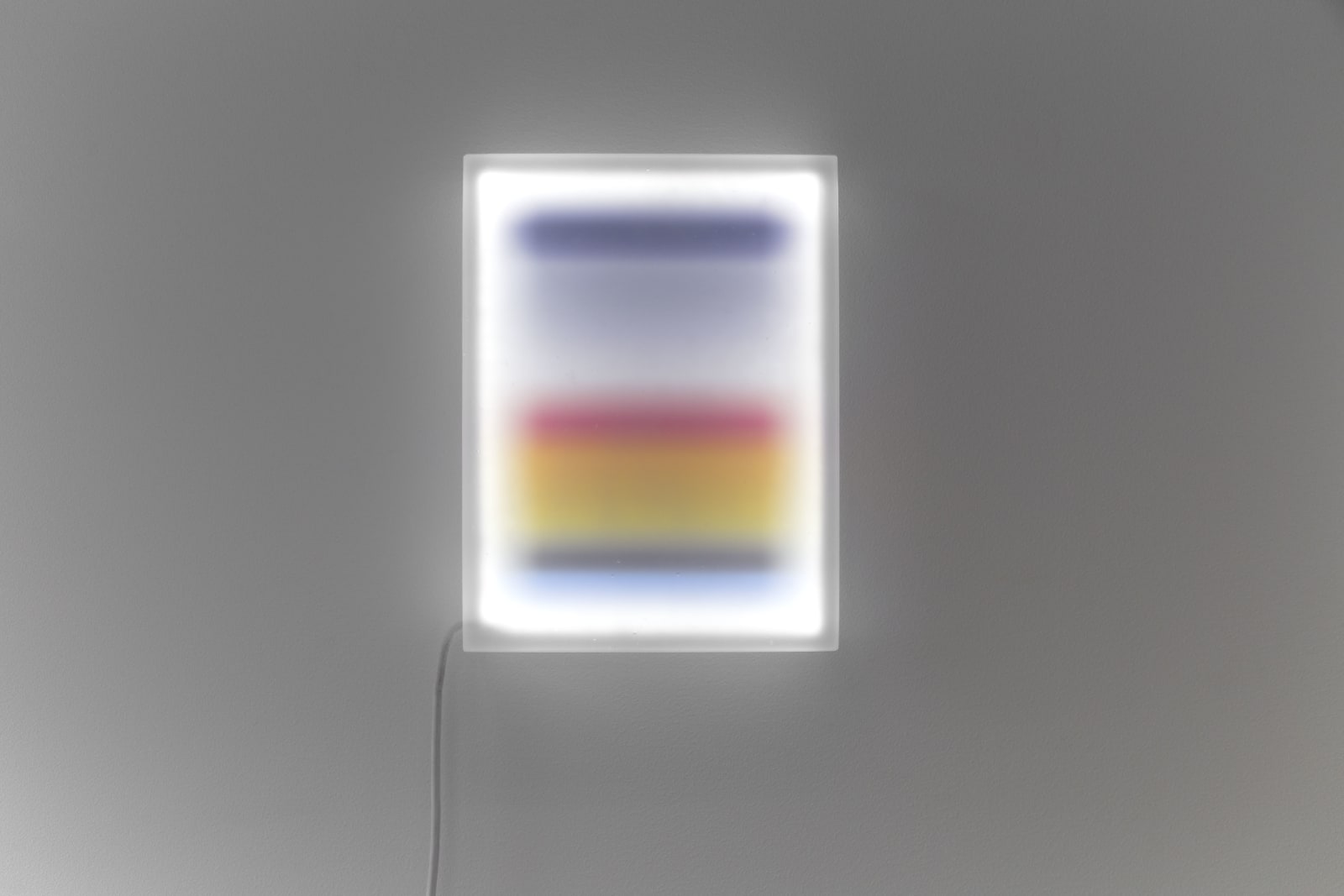Open a larger version of the following image in a popup:
 Exhibition Soleils martiens, Lieu Unique, Nantes, May-August 2022. ©Lieu Unique.
Exhibition Soleils martiens, Lieu Unique, Nantes, May-August 2022. ©Lieu Unique.
 Exhibition Soleils martiens, Lieu Unique, Nantes, May-August 2022. ©Lieu Unique.
Exhibition Soleils martiens, Lieu Unique, Nantes, May-August 2022. ©Lieu Unique.
Open a larger version of the following image in a popup:
 Exhibition Soleils martiens, Lieu Unique, Nantes, May-August 2022. ©Lieu Unique.
Exhibition Soleils martiens, Lieu Unique, Nantes, May-August 2022. ©Lieu Unique.
 Exhibition Soleils martiens, Lieu Unique, Nantes, May-August 2022. ©Lieu Unique.
Exhibition Soleils martiens, Lieu Unique, Nantes, May-August 2022. ©Lieu Unique.
Félicie d'Estienne d'Orves
Light DNA Supernovae: CAS A, 2019
White glass, light box, back light
30 x 25 cm
11 3/4 x 9 7/8 in
11 3/4 x 9 7/8 in
Edition of 5 plus 2 AP (#1/5)
Further images
Each work is a gradient composed from spectrometric data of three supernovae (explosion of a star). The colors correspond to the components, chemical elements such as Neon, Magnesium, Silicon, Sulfur,...
Each work is a gradient composed from spectrometric data of three supernovae (explosion of a star). The colors correspond to the components, chemical elements such as Neon, Magnesium, Silicon, Sulfur, Argon, Calcium, Iron. Astronomers have discovered that the matter that makes up the Earth is the same throughout the cosmos. The violent explosions of stars, supernovae, are one of the most important source of matter and energy of our Universe. The spectrometry and the electromagnetic field (as visible light, Gamma ray or ultraviolet) are tools to understand and define the type of matter that composes celestial objects within distance.
Project developed in cooperation with Fabio Acero, astrophysicist, specialist of Supernova at the AIM/ CEA laboratories (FR). Glass and electronics : 3DO art engineering.
Spectroscopy is the study of the interaction between matter and electromagnetic radiation with absorption or emission of radiant energy.
Project developed in cooperation with Fabio Acero, astrophysicist, specialist of Supernova at the AIM/ CEA laboratories (FR). Glass and electronics : 3DO art engineering.
Spectroscopy is the study of the interaction between matter and electromagnetic radiation with absorption or emission of radiant energy.








